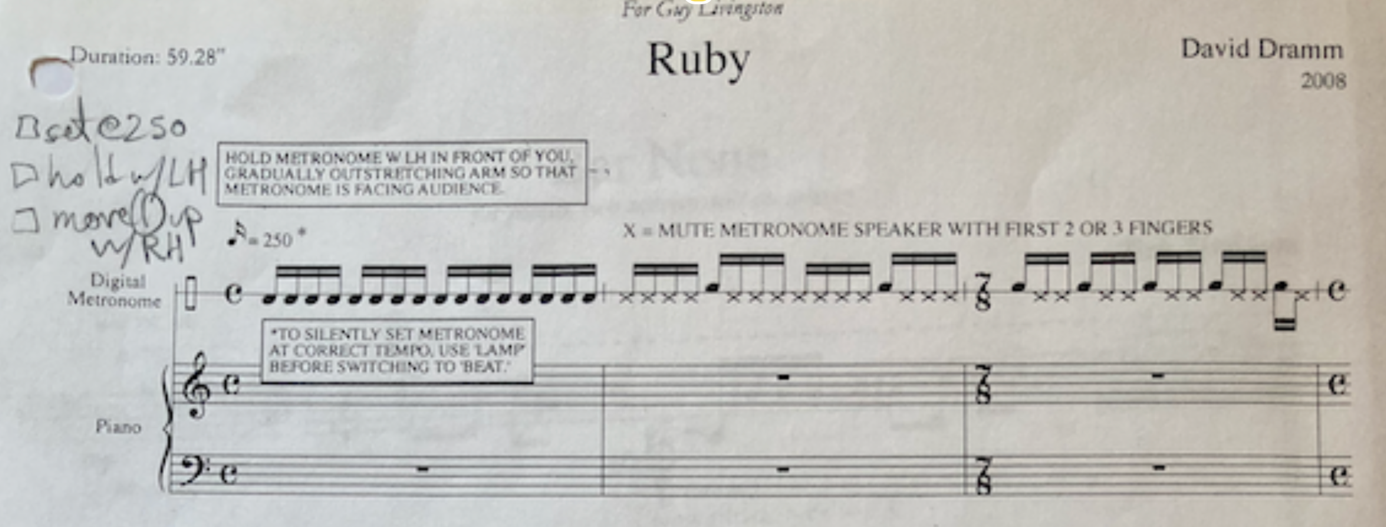Home 1. Introduction 2. Markers 3. Archive 4. Audible Markers 5. Visible Markers 6. Notational Markers 7. Conclusion
3.1. Integrated Silences 3.2. Inherent Silences 3.3. Silent Discourse 3.4. Meta-Silences 3.5. Silencings
Ruby highlights silence by playing with a metronome, which is normally taboo on stage. Metronomes are intended only for practice. The audience never hears or sees a metronome.1 It stays in the practice room. And a composition played with a metronome belongs in the practice room. It should thus be a composition without an audience. But that is not the composer’s intention, for the notation makes clear that this is a piece meant to be seen as much as it is heard.
At first, the metronome hardly seems a marker for silence, but gradually, its audible presence emphasizes the silences in the piano score. And its visible presence, too. Embodiment is of supreme importance in this performance (and is notated). Dramm specifies how and where the pianist’s arm should be held (raised, in front, “gradually outstretching arm so that metronome is facing audience”) and that the metronome (called a Ruby) should descend gradually during the diminuendo at the end. In the performance, I add gestural swoops with my left hand to emphasize the rhythmic syncopations, thus generating additional markers that suggest the connectivity of the silences.
